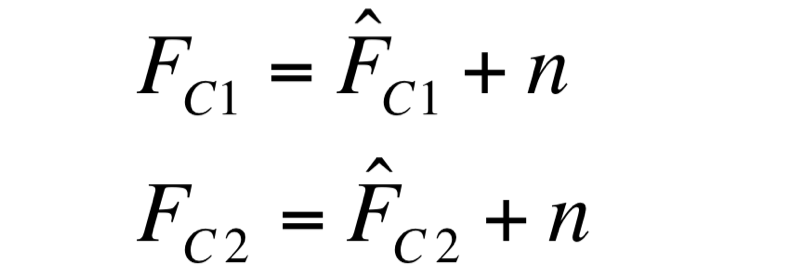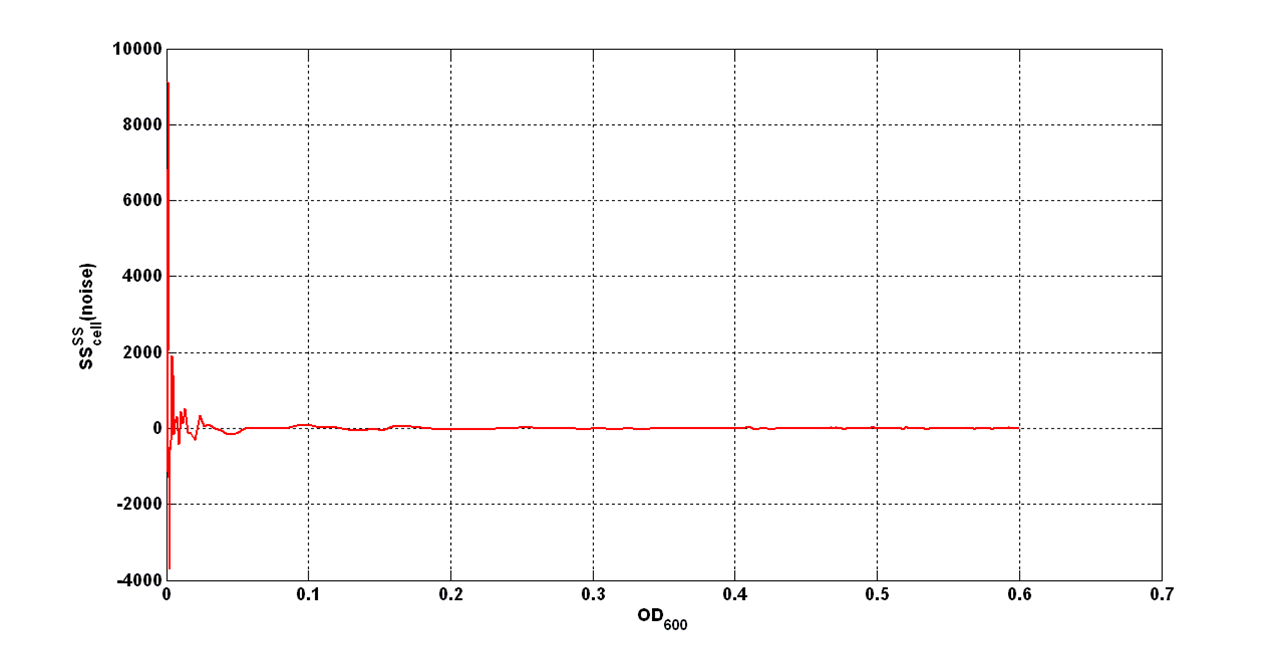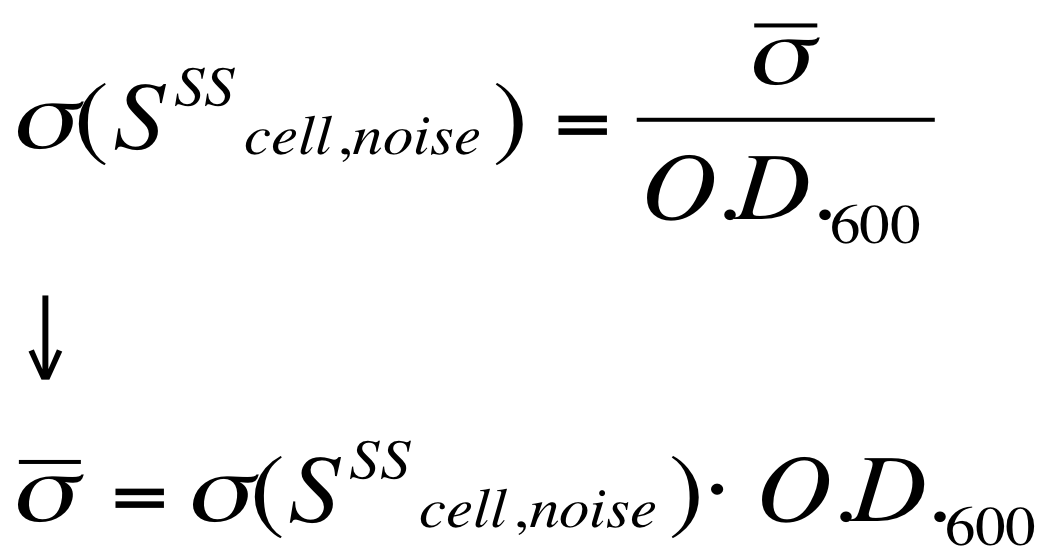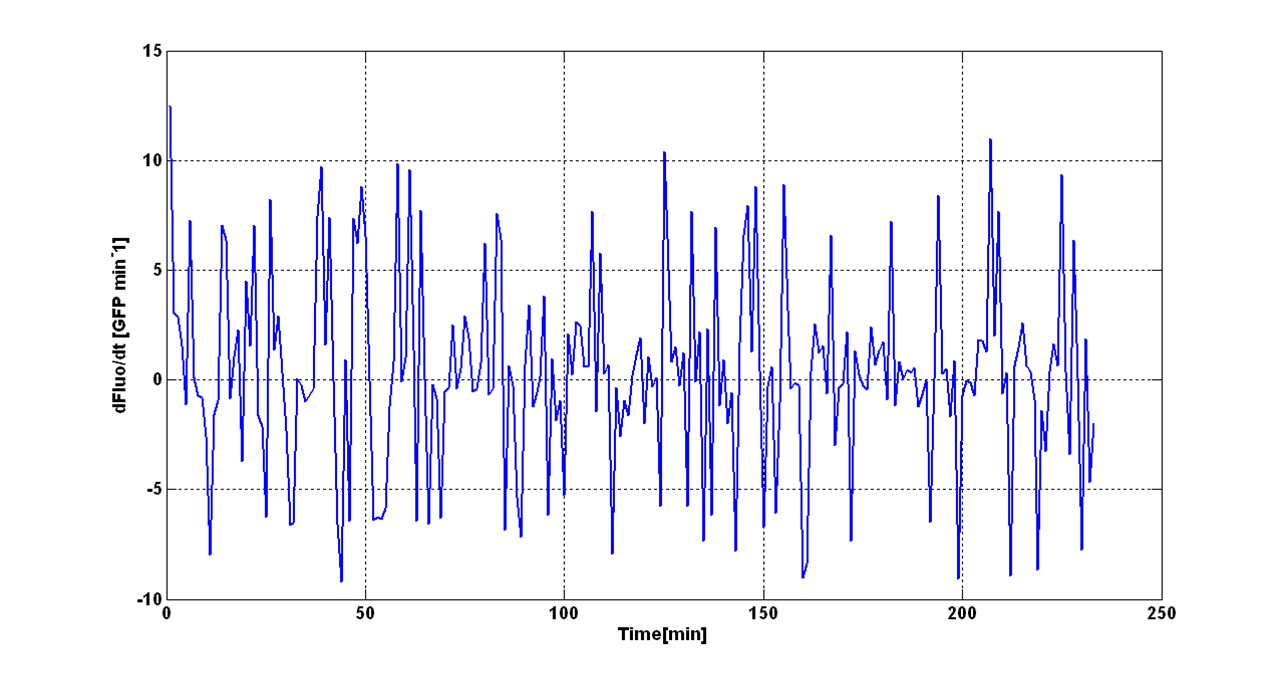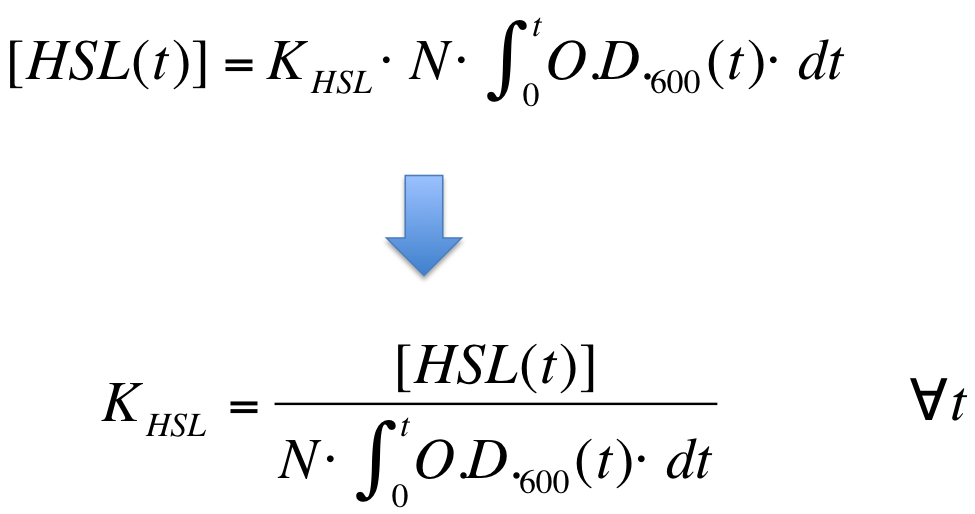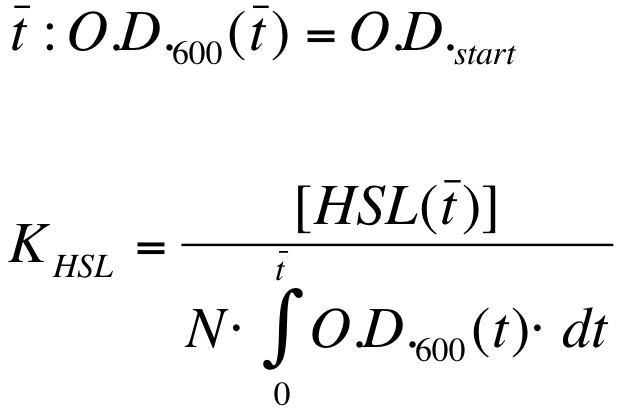|
CHARACTERIZATION
Our Parts
Growth conditions
Microplate reader experiments for self-inducible promoters - Protocol #1
- 8 ul of long term storage glycerol stock were inoculated in 1 ml of LB or M9 + suitable antibiotic in a 15 ml falcon tube and incubated at 37°C, 220 rpm for about 16 hours.
- The grown cultures were then diluted 1:100 in 1 ml of LB or M9 supplemented medium and incubated in the same conditions as before for about 4 hours.
- Cultures were then pelletted (2000 rpm, 10 minutes) in order to eliminate the HSL produced during the growth.
- Supernatants were discarded and the pellets were resuspended in 1 ml of LB or M9 + suitable antibiotic and transferred to a 1.5 ml tube
- These cultures were diluted 1:1000 in 1 ml of LB or M9 + suitable antibiotic and aliquoted in a flat-bottom 96-well microplate in triplicate, avoiding to perform dynamic experiments in the microplate frame (in order to prevent evaporation effects, see https://2009.igem.org/Team:UNIPV-Pavia/Methods_Materials/Evaporation). All the wells were filled with a 200 ul volume.
- The microplate was incubated in the Tecan Infinite F200 microplate reader and fluorescence and absorbance were measured with this automatic protocol:
- 37°C constant for all the experiment;
- sampling time of 5 minutes;
- fluorescence gain of 50;
- O.D. filter was 600 nm;
- GFP filters were 485nm (ex) / 540nm (em);
- 15 seconds of linear shaking (3mm amplitude) followed by 10 seconds of waiting before the measurements in order to make a homogeneous culture.
- Variable experiment duration time (from 3 to 24 hours).
Microplate reader experiments for constitutive promoters (R.P.U. evaluation) - Protocol #2
- 8 ul of long term storage glycerol stock were inoculated in 5 ml of LB or M9 + suitable antibiotic in a 15 ml falcon tube and incubated at 37°C, 220 rpm for about 16 hours.
- The grown cultures were then diluted 1:100 in 5 ml of LB or M9 supplemented medium and incubated in the same conditions as before for about 4 hours.
- These new cultures were diluted to an O.D.600 of 0.02 (measured with a TECAN F200 microplate reader on a 200 ul of volume per well; it is not equivalent to the 1 cm pathlength cuvette) in 2 ml (wanted final volume) LB or M9 + suitable antibiotic. In order to have the cultures at the desired O.D.600 (O.D._wanted=0.02), the following dilution was performed:
- These new dilutions were aliquoted in a flat-bottom 96-well microplate, avoiding to perform dynamic experiments in the microplate frame (in order to prevent evaporation effects in the frame). All the wells were filled with a 200 ul volume.
- The microplate was incubated in the Tecan Infinite F200 microplate reader and fluorescence and absorbance were measured with this automatic protocol:
- 37°C constant for all the experiment;
- sampling time of 5 minutes;
- fluorescence gain of 50 or 70;
- O.D. filter was 600 nm;
- GFP filters were 485nm (ex) / 540nm (em);
- RFP filters were 535nm (ex) / 620nm (em);
- 15 seconds of linear shaking (3mm amplitude) followed by 10 seconds of waiting before the measurements in order to make a homogeneous culture.
- Experiment duration time: about 6 hours.
Microplate reader experiments for 3OC6-HSL quantification by means of <partinfo>BBa_T9002</partinfo> biosensor - Protocol #3
The aim of this experiment is the quantification of the 3OC6-HSL produced by cultures harbouring plasmids derived from <partinfo>BBa_K300009</partinfo>. These plasmids are BBa_J231xx-<partinfo>BBa_K300009</partinfo> assemblies, where BBa_J231xx are Anderson Promoter Collection library members. This assembled parts are 3OC6-HSL generators and one important parameter to be evaluated is the concentration of 3OC6-HSL produced.
The "3OC6-HSL generator" culture was processed as follows:
- Preparation of 3OC6-HSL generating cultures:
- 8 ul of BBa_J231xx-<partinfo>BBa_K300009</partinfo> long term glycerol stock were inoculated in 5 ml of LB + suitable antibiotic in a 15 ml falcon tube and incubated at 37°C, 220 rpm for about 16 hours.
- The grown cultures were then diluted 1:100 in 5 ml of LB supplemented medium and incubated in the same conditions as before for 6 hours.
- Each falcon was pelletted (2000 rpm, 10 minutes) and supernatants were collected and filtered (0.2 um), in order to eliminate bacterial residues. These supernatants contained the 3OC6-HSL at the concentration produced by cultures. These supernatants were used to "induce" <partinfo>BBa_T9002</partinfo> cultures, in order to quantify the [HSL]. They were conserved at -20°C until the next day.
- Growth and preparation of the biosensor culture of <partinfo>BBa_T9002</partinfo>
- 8 ul of <partinfo>BBa_T9002</partinfo> long term glycerol stock were inoculated in 5 ml of LB + suitable antibiotic in a 15 ml falcon tube and incubated at 37°C, 220 rpm for about 16 hours.
- The grown cultures were then diluted 1:100 in 5 ml of LB supplemented medium and incubated in the same conditions as before until they reached an O.D.600 of 0.07 (measured by Tecan INFINITE F200).
- the required number (see below) of 200 ul aliquots of culture were transferred in each well of a 96-well microplate.
- Calibration curve
- A calibration curve was obtained, by inducing in triplicate wells of <partinfo>BBa_T9002</partinfo> with different known HSL concentrations:
- 10 uM
- 1 uM
- 100 nM
- 50 nM
- 10 nM
- 5 nM
- 2 nM
- 1 nM
- 0,5 nM
- 0,1 nM
- 0 M
- All inductions were performed adding 2ul of "inducer solution" (3OC6-HSL, Sigma Aldrich) at the proper concentration in 200 ul of culture.
- HSL quantification
- 2ul of supernatants prepared as described above were used to induce 200 ul of <partinfo>BBa_T9002</partinfo> cultures in triplicate.
- If the amount of 3OC6-HSL present in the supernatant was not enough concentrated to trigger the induction of <partinfo>BBa_T9002</partinfo>, a bigger amount of supernatant (X ul) was used to induce the cultures (200-X ul of cultures). Then, the calibration curve was obtained by using the same amount of <partinfo>BBa_T9002</partinfo> culture (200-X ul) induced with X ul of inducer solution at the proper concentration. To maintain the same experimental conditions, the inducer was diluted in the supernatant of a negative control (i.e., <partinfo>BBa_B0034</partinfo>).
- Fluorescence and absorbance were measured after 30 min from the induction with a Tecan Infinite F200 microplate reader and, using the information provided by the calibration curve, the amount of 3OC6-HSL present in every supernatant was evaluated (each reported fluorescence value was corrected with the O.D.600 of the culture).
Microplate reader experiments for <partinfo>BBa_F2620</partinfo> - Protocol #4
This protocol is identical to this one, but in addition, after cultures were transferred in the 96-well microplate, 2ul of inducer solution at the proper concentration were added to each well, thus obtaining the final desired concentration.
Data Analysis
- All our growth curves have been obtained subtracting for each time sample the broth O.D.600 measurement from that of the culture; broth was considered in the same conditions of the culture (i.e. induced with the same inducer concentration and supplemented with the same antibiotic of the culture).
- Fluorescence signals have been obtained subtracting for each time sample the fluorescent measurement of a non-fluorescent culture from that of the target culture. The non-fluorescent culture was considered in the same conditions of the culture of interest (e.g. induced with the same inducer concentration and with the same plasmid/antibiotic resistance, but without fluorescent reporter genes). This operation allows the removal, from the target fluorescent signal, of the "self-fluorescent" component and the fluorescence signal obtained is "blanked".
Doubling time evaluation
The natural logarithm of the growth curves (processed according to the above section) was computed and the linear phase (corresponding to the bacterial exponential growth phase) was isolated by visual inspection. Then the linear regression was performed in order to estimate the slope of the line m. Finally the doubling time was estimated as d=ln(2)/m [minutes].
In the case of multiple growth curves for a strain, the mean value of the processed curves was computed for each time sample before applying the above described procedure.
Data analysis for self-inducible promoters (initiation-treshold determination)
The task of this analysis is the evaluation of the initiation transcription point (in terms of absorbance) for self-inducible devices. The transition O.D.600 value is named, from now on, O.D.start.
Data from three indipendent wells were averaged and blanked. O.D.600 signals were blanked as described in "Preliminary Remarks" section, while the fluorescence signal was blanked with the fluorescence of <partinfo>BBa_T9002</partinfo> part, assembled in the same plasmid of the considered promoter. This operation allows the removal from the fluorescence signal of the autofluorescence component and of the “leaky” component (due to the leakage of lux pR promoter in absence of the autoinducer molecule HSL).
O.D.start was evaluated by computing the Scell (GFPmut3 synthesis rate per cell) signal for the desired self-inducible promoter.
Scell was obtained by computing (1/O.D.600)*dGFP/dt, where O.D.600 and GFP are the blanked absorbance and fluorescence signals.
The goal is the estimation of the critical O.D.600 value (O.D.start) at which the Scell significantly increases. Because Scell is a very noisy signal, a threshold value which takes into account the noise variability was proposed and it is described below.
Two different signals, measured from independent samples of the same non-fluorescent culture in the same experiment, are considered: C1 and C2. The fluorescence signal of C1 and C2 (F_C1 and F_C2 respectively) can be thought as the addition of a “real signal” and a noise component.
F_C1 and F_C2 have the same expected value and the same standard deviation, since they are two independent realizations of the same aleatory process: in fact, they are two time series acquired from the same cultures in the same growth conditions by the same instrument.
Noise signal was computed as:
An interesting signal is the Scell of N time series. It can be evaluated as the time derivative of N, divided by O.D.600 of the culture. It has the behaviour shown in figure:
It is fair to say that the noise of Scell is bigger for low O.D.600 values and its amplitude decreases dramatically for higher O.D.600 values (e.g.: O.D.600>0.1 measured with the TECAN Infinite F200 in a 96-well microplate).
The O.D.600-dependent noise model proposed for the Scell signal is:
According to the formula reported above, it is possible to obtain the sigma_bar value as follows:
- multiply the Scell time series values with the corresponding O.D.600;
- the sigma_bar constant value can be estimated as the standard deviation of this signal.
The Scell*O.D.600 signal behaviour is reported below:
As this figure shows, the noise amplitude of this signal is no more O.D.600-dependent and the sigma_bar can be obtained.
The evaluation of the O.D.start can be performed supposing that the transcription starts when the signal is significantly different from the noise. A threshold on the signal amplitude was estabilished as reported here:
In order to make the method more robust, induction was considered only when 5 consecutive values exceeded the threshold amplitude.
The operation of subtracting the two signals F_C1 and F_C2 is analogous to the “blanking” operation performed on data, as described previously. For, this reason, under the hypothesis that the signals have the same variance (this is a consistent hypothesis, since they are measured by the same instrument in the same experimental conditions), this argument can be extended to the “blanked” data considered in the processing.
In particular, it is evident that the "blanked" signal is affected by the same noise described above and thus, the noise of Scell signal is analogous to the one described before.
Thus, this threshold was used to compute the O.D.start for the cultures. This heuristic algorithm was implemented in Matlab and analysis results are reported in the “results” section.
Data analysis to estimate the HSL synthesis rate per cell
The autoinducer synthesys rate per cell is a very important parameter to be evaluated in quorum sensing systems.
In fact the knowledge of this parameter enables the rational design of cell-communication systems, such as the self-inducible devices studied in this project.
A model based approach was proposed to estimate this interesting parameter.
Under the hypotheses that:
- no HSL is present at the beginning of the experiment - consistent hypothesis because a growth medium washing step is always performed before the experiment start in order to remove the HSL produced until that moment,
- the HSL synthesis rate is not time-dependent (cells produce HSL at the same rate in each growth phase - this hypotesis simplifies the data analysis, but it should be further validated),
- the half life of the autoinducer is much longer than the experiment duration (i.e. the degradation of the molecule is negligible - this hypothesis is consistent, since no HSL-degrading enzyme is present in E. coli),
an Ordinary Differential Equation (ODE) model which describes the HSL production in the growth media can be written:
where:
- [HSL(t)] is the concentration of HSL molecule in the growth medium;
- O.D.600(t) is the growth curve of the considered culture;
- N is the Colony Forming Units (CFU) per O.D.600 unit (i.e. CFU in a well = O.D.600 * N)
- K_HSL is the 3OC6-HSL synthesis rate per cell
The analytical solution of this system is:
K_HSL can be estimated for t=t_bar, corresponding to the transcription initiation time, as reported below.
where:
N was estimated in LB and M9 media and values are reported below:
| | LB | M9
|
| N | 2,818 * 10^9 | 2,123 * 10^9
|
Data Analysis - minimum induction required to activate lux pR for <partinfo>BBa_F2620</partinfo>
Cultures were grown according to this protocol.
Data from three indipendent wells were averaged and blanked as described in "Preliminary Remarks" section.
Minimum induction required to activate lux pR was evaluated by a visual inspection of Scell signal
 Minimum induction required to activate lux pR for <partinfo>BBa_F2620</partinfo>
HSL(t_bar) was evaluated only in M9 medium because it is a minimum autofluorescence growth medium and it provides the most accurate result in estimating a low fluorescence.
Data analysis for RPU evaluation
The RPUs are standard units proposed by Kelly J. et al., 2009, in which the relative transcriptional strength of a promoter can be measured using a reference standard.
RPUs have been computed as:
in which:
- phi is the promoter of interest and J23101 is the reference standard promoter (taken from the Anderson Promoter Collection);
- F is the blanked fluorescence of the culture, computed by subtracting for each time sample the fluorescence value of a negative control (a non-fluorescent culture). In our experiments, the TOP10 cells bearing BBa_B0032 or BBa_B0033 were usually used because they are RBSs and do not have expression systems for reporter genes;
- ASB is the blanked absorbance (O.D.600) of the culture, computed as described in "Preliminary remarks" section.
RPU measurement has the following advantages (under suitable conditions)
- it is proportional to PoPS (Polymerase Per Second), a very important parameter that expresses the transcription rate of a promoter;
- it uses a reference standard and so measurements can be compared between different laboratories.
The hypotheses on which RPU theory is based can be found in Kelly J. et al., 2008, as well as all the mathematical steps. From our point of view, the main hypotheses that have to be satisfied are the following:
- the reporter protein must have a half life higher than the experiment duration (we use GFPmut3 - <partinfo>BBa_E0040</partinfo> -, which has an estimated half life of at least 24 hours, or an engineered RFP - <partinfo>BBa_E1010</partinfo>, for which the half life has not been measured, but is qualitatively comparable with the GFP's);
- strain, plasmid copy number, antibiotic, growth medium, growth conditions, protein generator assembled downstream of the promoter must be the same in the promoter of interest and in J23101 reference standard.
- steady state must be valid, so (dF/dt)/ASB (proportional to the GFP synthesis rate per cell) must be constant.
In order to compute the RPUs, the Scell signals ((dGFP/dt)/ASB)) of the promoter of interest and of the reference J23101 were averaged in the time interval corresponding to the exponential growth phase. The boundaries of exponential phase were identified with a visual inspection of the linear phase of the logarithmic growth curve.
|
 "
"


